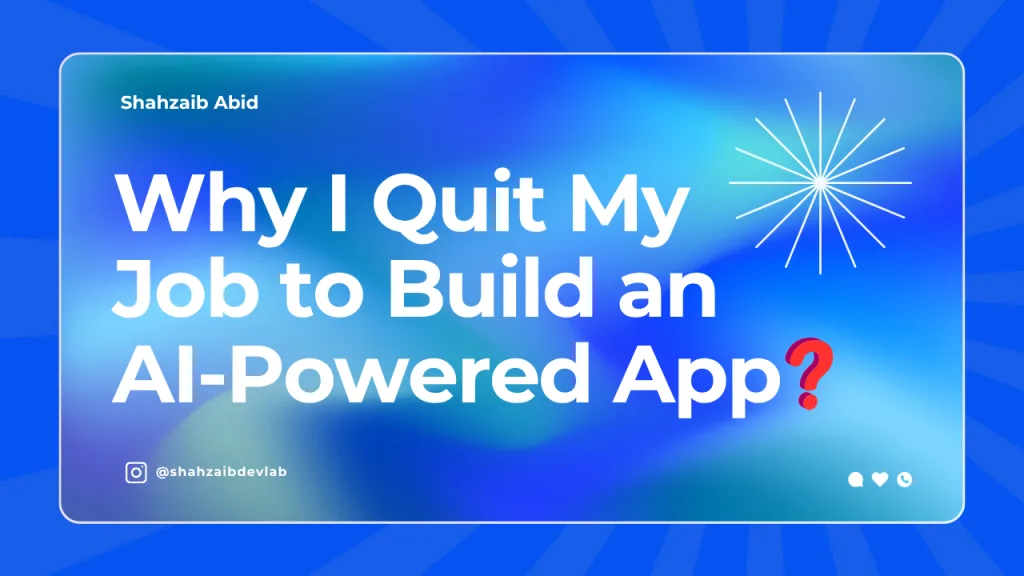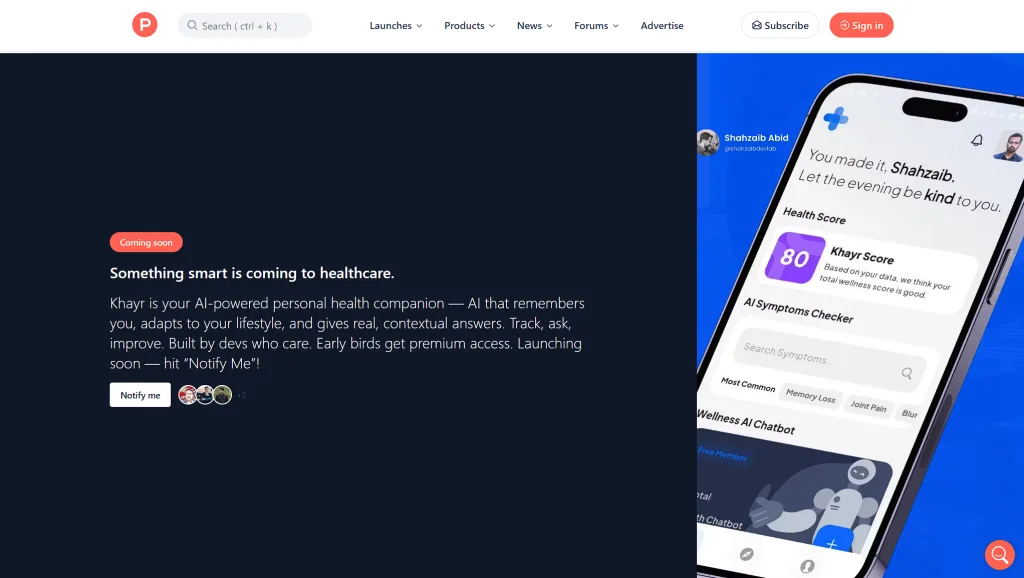
In 2025, I took the boldest step of my career: I quit my job to build something I truly believed in. I wasn’t chasing the next “viral” idea or a quick win — I wanted to create something meaningful, something that could help people every day. That journey led me to build an AI Flutter App, and the story behind it might inspire you to chase your own big idea.
Why Flutter Was My First Choice
As a developer, I’ve always admired Flutter for its ability to create beautiful, high-performance apps from a single codebase. I knew that if I wanted my product to be available to everyone — Android, iOS, and even web. Flutter was my best bet.
In the fast-moving tech world, speed matters. Using Flutter, I could rapidly prototype, test, and iterate without maintaining multiple codebases. This wasn’t just about convenience; it was about efficiency. When you’re building something as ambitious as an AI-powered health app, time saved on development is time gained for refining features and user experience.
If you haven’t explored Flutter yet, you might enjoy my Flutter roadmap article where I break down how to get started with confidence.
Why AI? Why Now?
While Flutter gave me the canvas, artificial intelligence gave me the paintbrush. The health app space is crowded, but most solutions feel generic. I wanted something different — a Flutter AI App that could remember users’ past health inputs, adapt to their habits, and offer truly personalized advice.
This wasn’t just about adding an AI chatbot. It was about making an AI health app that feels alive — a health companion that learns, remembers, and evolves alongside the user.
For inspiration, I looked into AI advancements in health tech from leaders like WHO’s digital health guidelines and realized the timing couldn’t be better. AI adoption is accelerating, and user expectations are higher than ever.
Building the First Version

The first few weeks were a rollercoaster. Some days, I’d be in “flow mode” building screens, integrating AI logic, and watching features come alive. Other days, I’d stare at my code wondering if I’d bitten off more than I could chew.
My AI Flutter App needed three core capabilities:
1. Personal Health Memory – The AI remembers the user’s health history to make future suggestions more relevant.
2. Real-Time Conversation – Instant health-related answers without long loading times.
3. Routine Health Check-ins – Every couple of days, the app would prompt a quick assessment to keep its memory updated.
Balancing AI processing, data privacy, and a smooth user experience was the hardest part. But Flutter’s widget flexibility and state management systems helped me turn complex flows into intuitive screens.
The Challenges No One Talks About
Leaving a job to build something from scratch isn’t glamorous. Sure, it’s exciting to be “your own boss,” but it also means you’re the designer, developer, tester, marketer, and customer support team — all rolled into one.
Some unexpected challenges I faced while developing my flutter app 2025:
- Data Privacy – Health data is sensitive, so encryption and secure storage were non-negotiable.
- User Retention – AI features are impressive, but they must provide continuous value to keep users engaged.
- Decision Fatigue – When you’re solo, you have to make hundreds of tiny product decisions every week.
Still, every solved problem made the app better — and made me a better developer.
Preparing for the Product Hunt Launch

Once I had a functional MVP, I started preparing for launch. My plan was to showcase the app on Product Hunt — a platform where tech lovers, early adopters, and investors discover new products.
To stand out, I focused on:
- Clear storytelling – Why I built it and how it’s different.
- Clean visuals – Screenshots that convey both functionality and personality.
- Community engagement – Building curiosity before launch day.
The more I shared my journey — both the highs and the “oh no” moments — the more people wanted to see the final product.
Why This Journey Matters
Whether you’re a developer, a startup founder, or a business looking for innovative software, there’s something powerful about blending AI and Flutter. The framework gives you the reach, while AI gives you the intelligence and personalization that modern users expect.
For me, this wasn’t just about creating an AI Flutter App. It was about proving that with the right tools and vision, you can go from concept to launch-ready product — even if you start solo.
What’s Next?
The AI Flutter App is just the beginning. My roadmap includes expanding its AI capabilities, adding integrations with wearables, and making the experience even more proactive in helping users improve their health.
If you’re building your own flutter ai app, my biggest advice is this: don’t wait for “the perfect moment.” It doesn’t exist. Start small, iterate fast, and keep your users in the loop.

Final Thoughts
Quitting my job to build this app was a leap into the unknown, but it’s been the most rewarding chapter of my career so far. Flutter made it fast, AI made it smart, and the journey made me resilient.
You can also connect with me on LinkedIn or follow along on Instagram for behind-the-scenes updates on my next big launch.